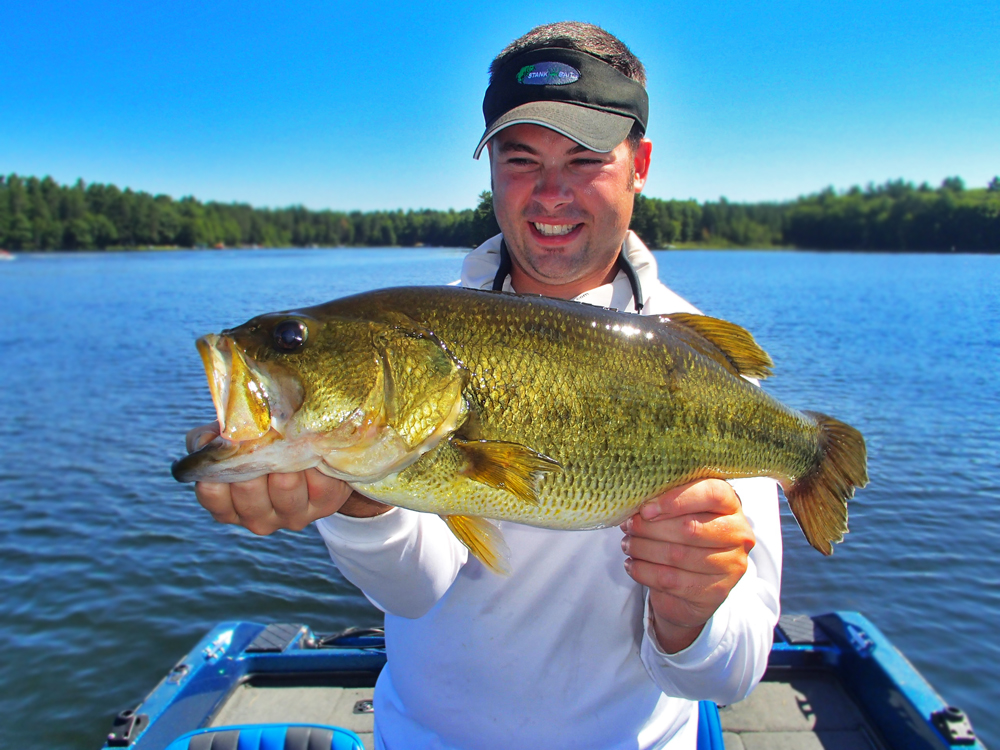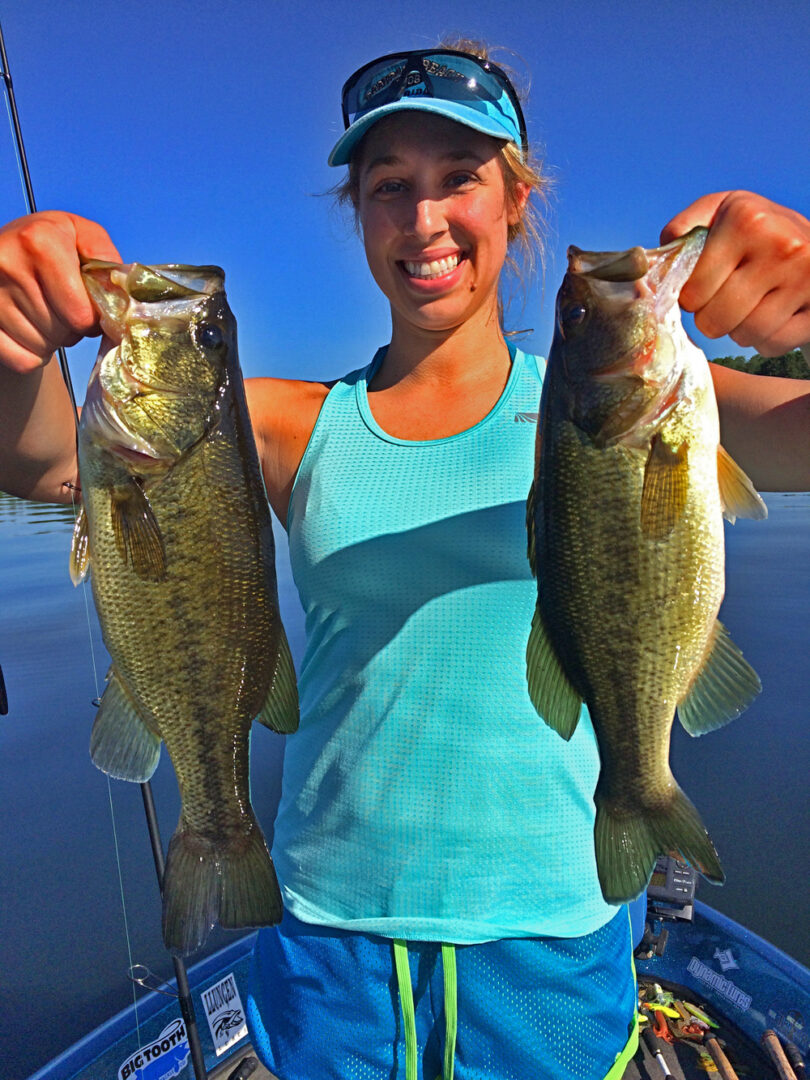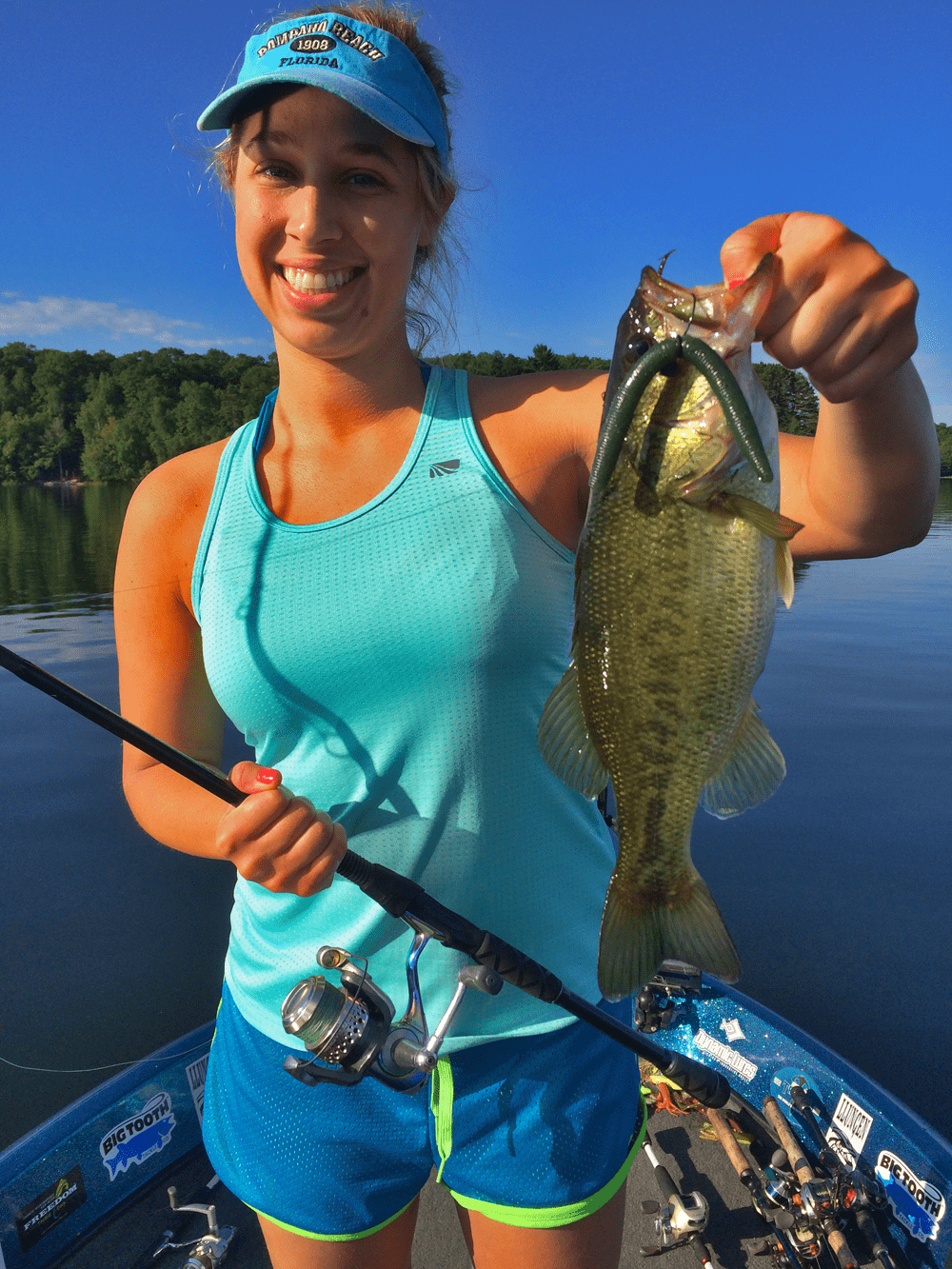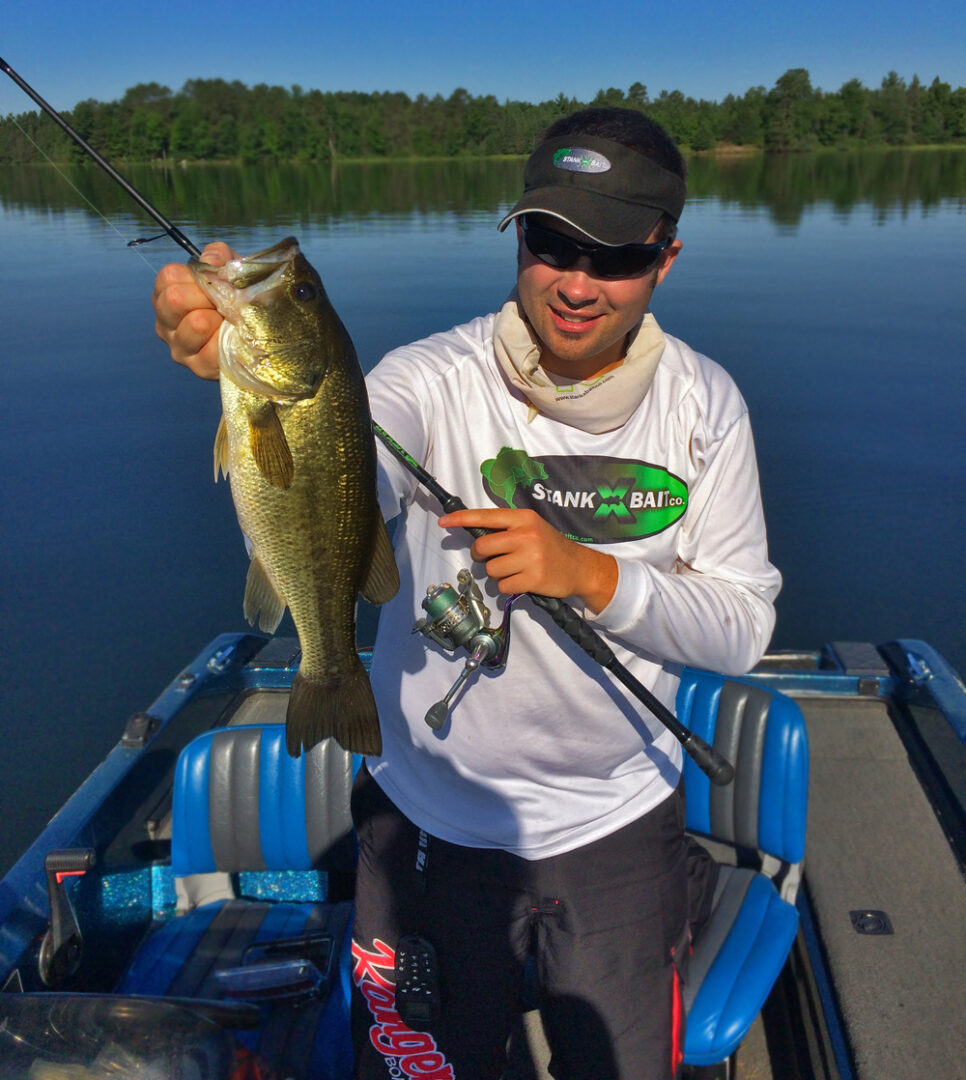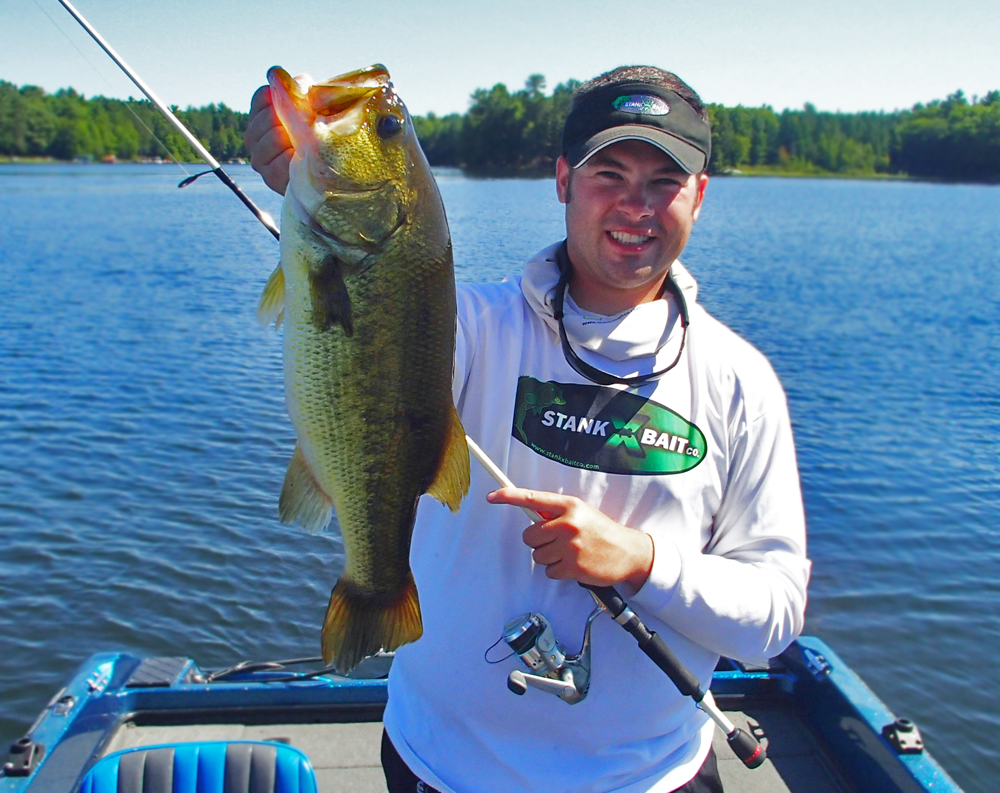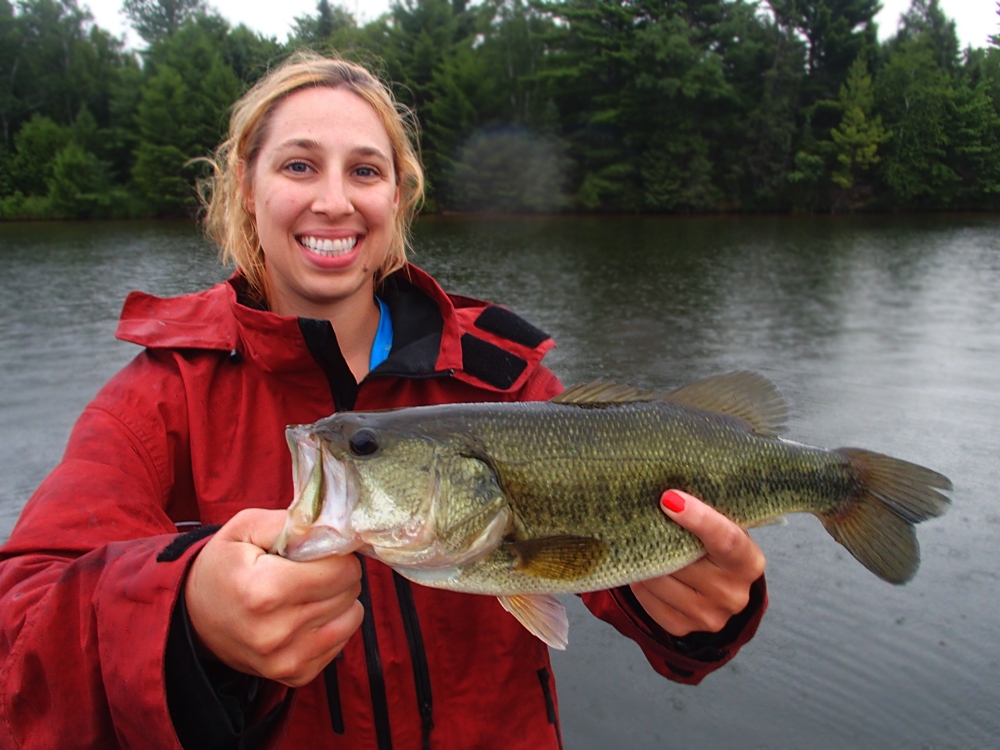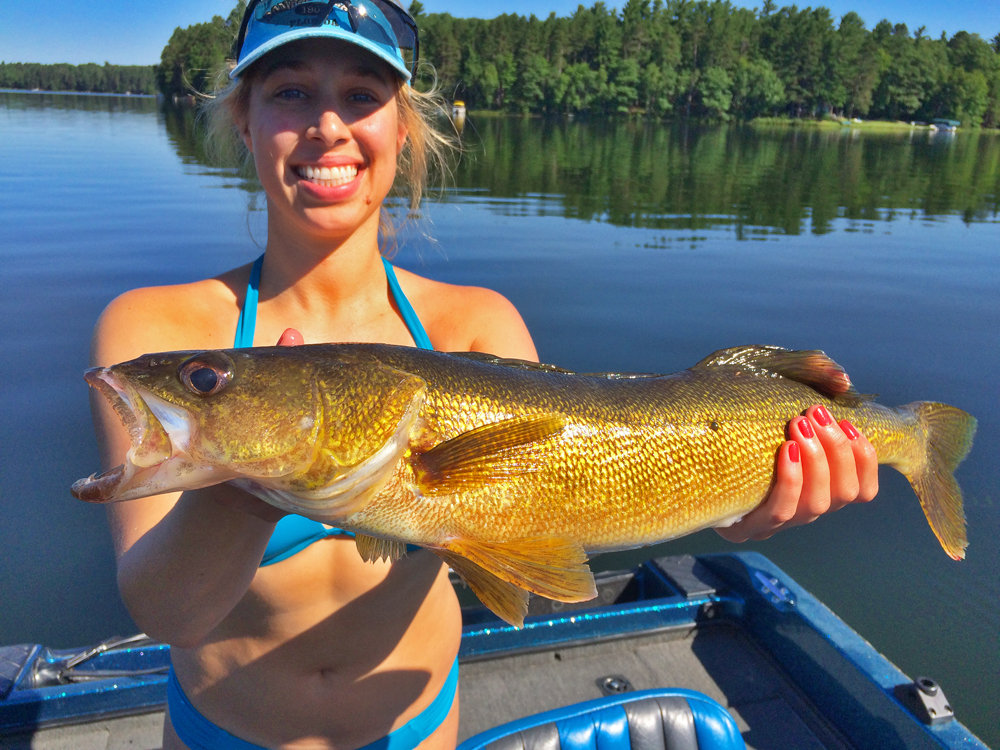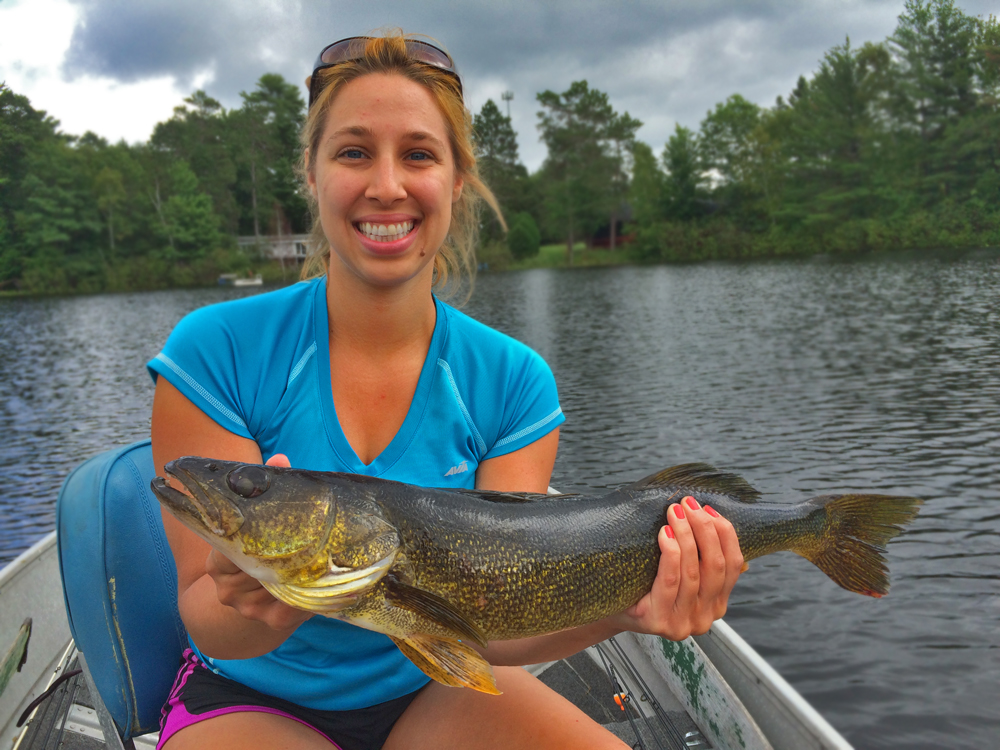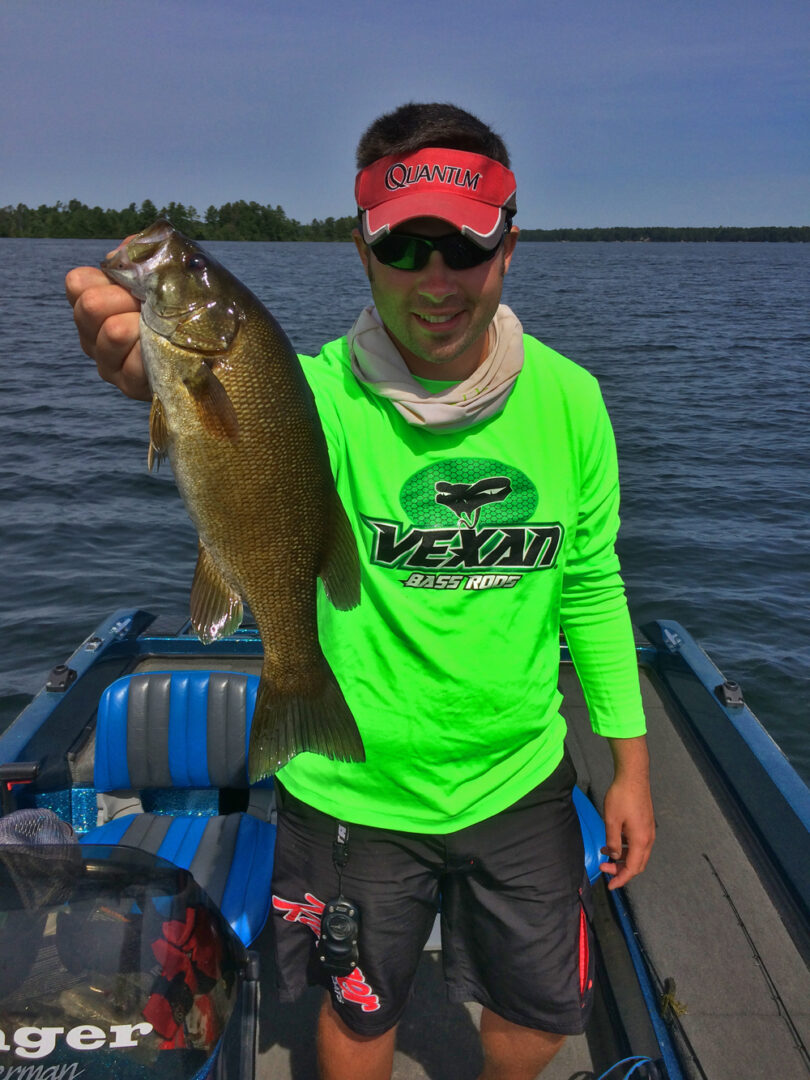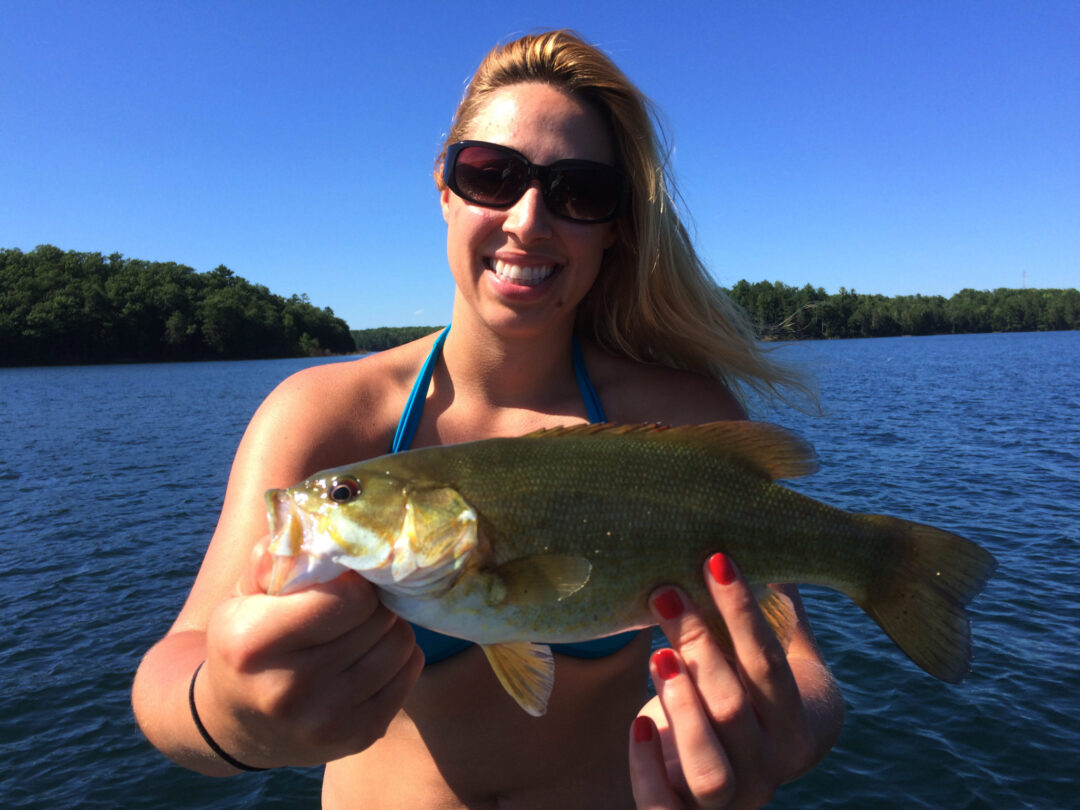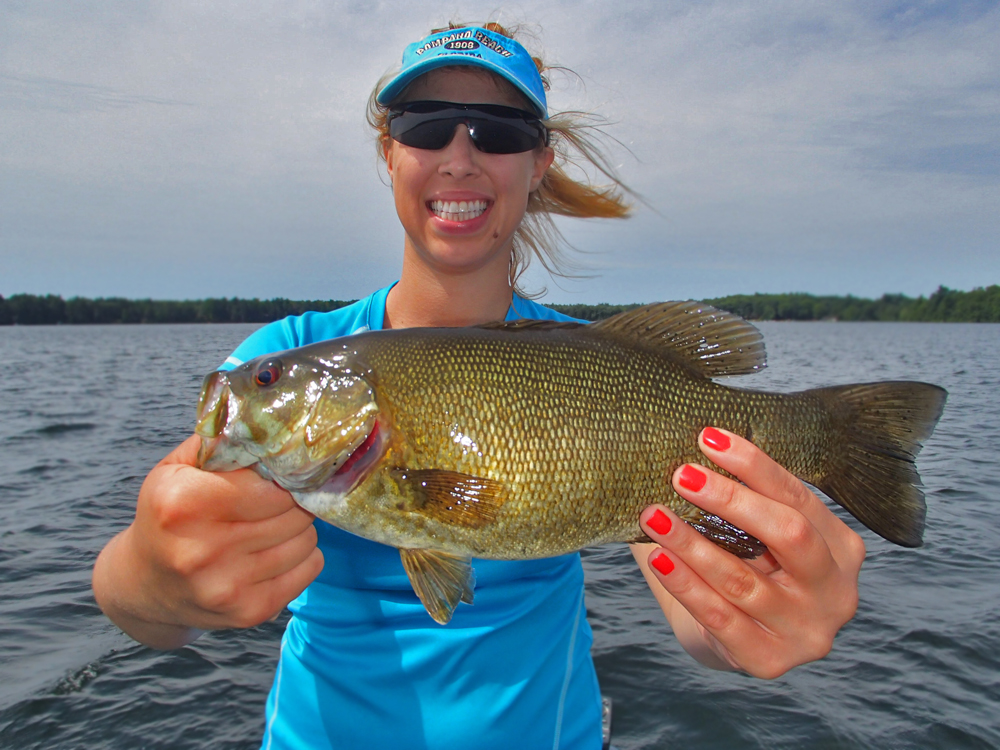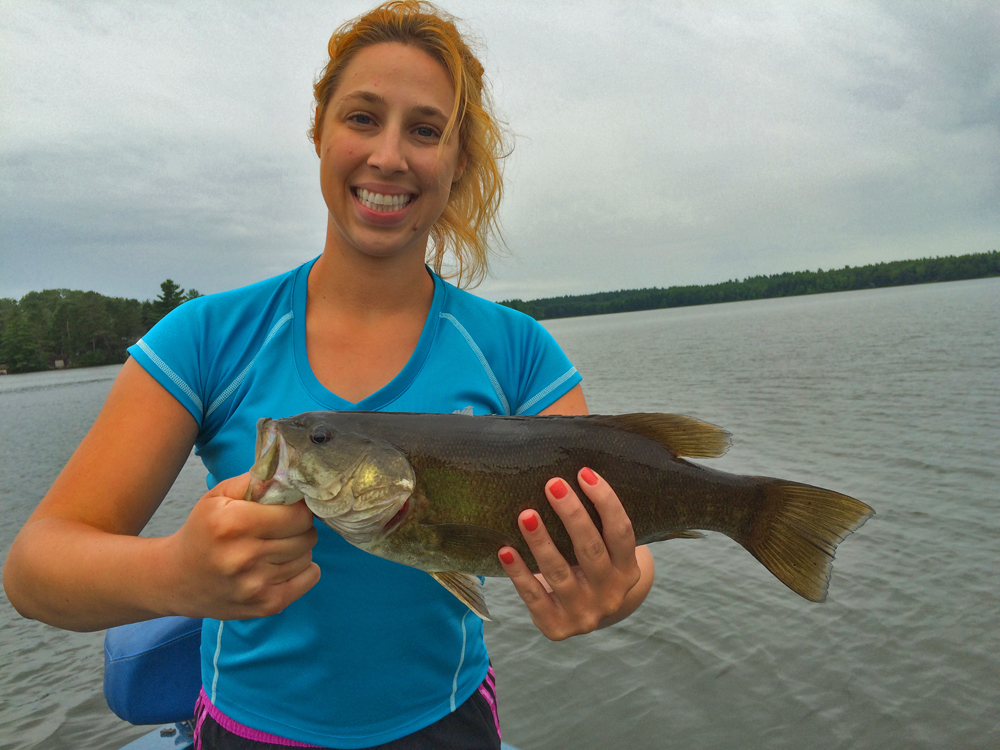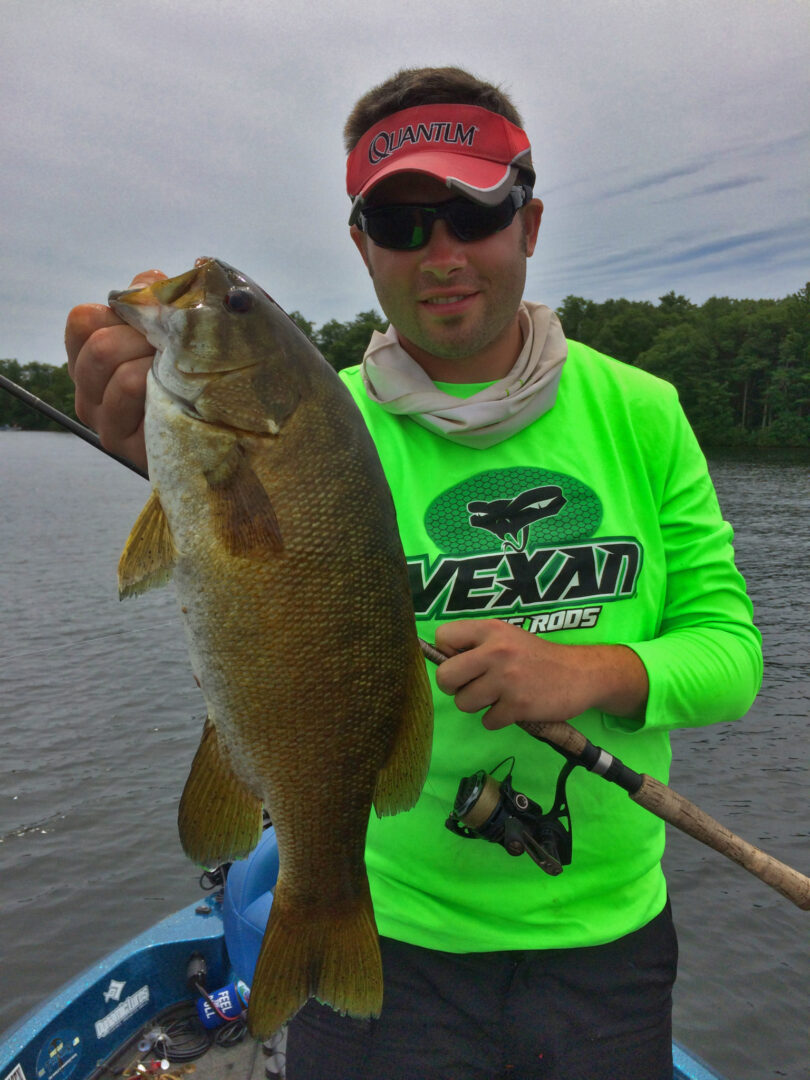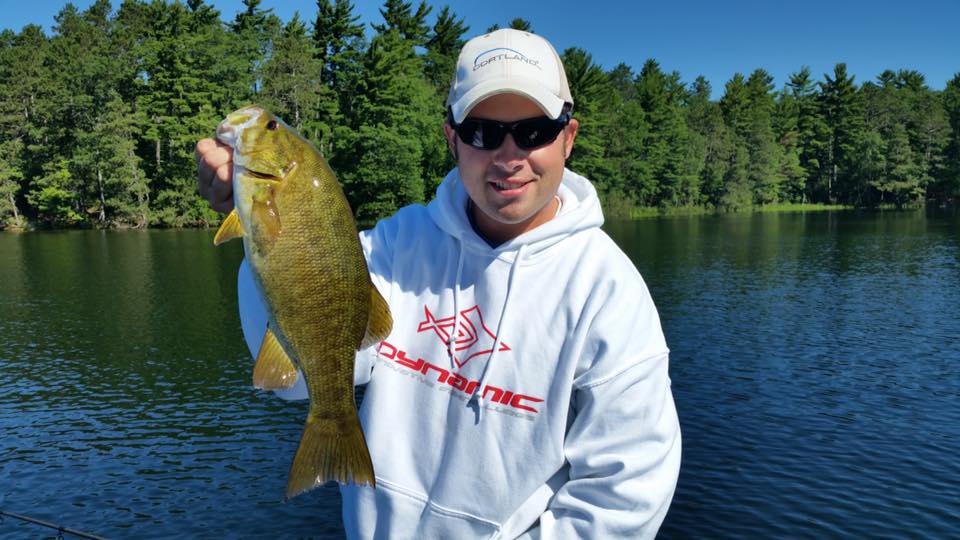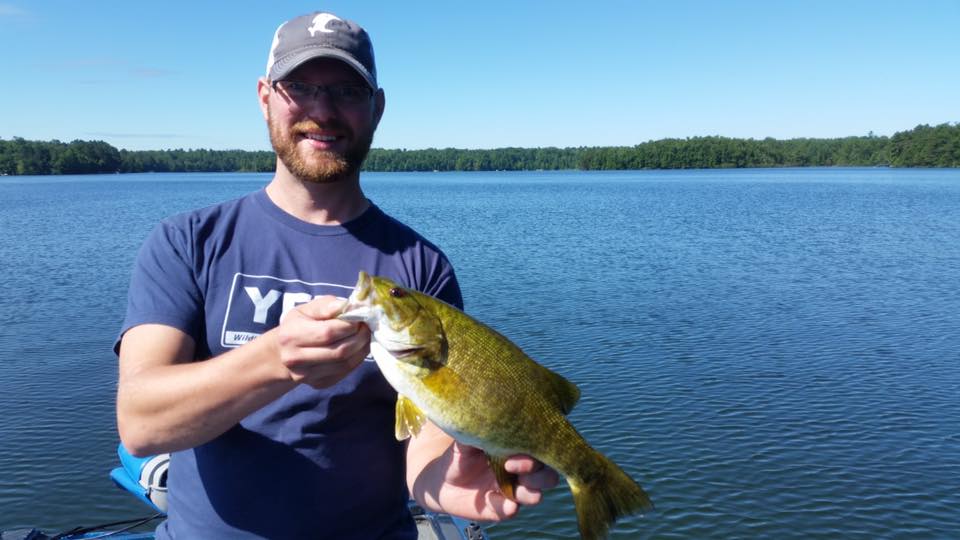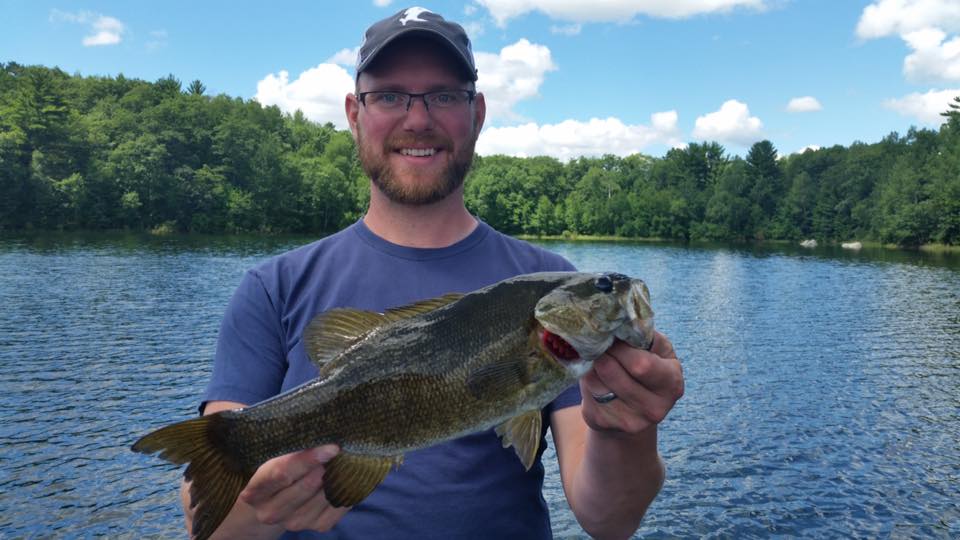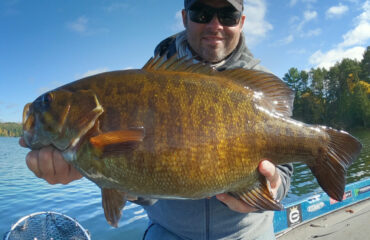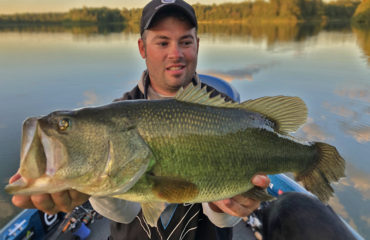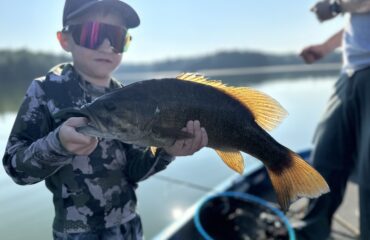Northwoods Bass Fishing Report, July 2016
Hello readers and anglers, thank you for following my pursuit of the northwoods bass during the month of July. It was a month filled with travel and adventure. First week of July, I traveled to Rainy Lake Ontario, to fish smallmouths and multi-species with Camp Narrows Lodge, located at the northwest arm of Rainy Lake. From Minocqua, it’s a 6-hour drive where one can experience some of the best fishing in all of North America for smallmouth bass, walleyes, and northern pike. Due to my balancing act of desk work and fishing work, I haven’t found time to provide a trip summary, and write this year’s article installments but in the next few weeks I will make it happen.
After Rainy lake, for the rest of the month I enjoyed the paradise of largemouth and smallmouth bass the Minocqua region offers.
Fishing in July required fishing early and late. Feeding windows varied lake by lake, however 7-9am and 6-8pm seemed most constant, even though the fishing inconsistent due to heat and many tree-knocking storms and monsoons.
The heat wave we had from 7/17-7/24 took a toll on many area lakes as surface temperatures reached as high as 85 degrees. It was extreme to the point that the first 10 feet below surface was almost as warm. Smallmouth bass did not find these conditions accommodating, but largemouth bass did, and fed heavily and enjoyed these calm and hot conditions the most.
With largemouth bass having been the hot bite for most of the month, my guests and I found some very good mid-summer patterns taking shape:
Bluegill pattern:
We found a very good early morning and deep grass pattern taking shape from 10-15ft, where mass numbers of largemouths would congregate around schools of bluegills and perch. These grass jungles held fish from 12 to 18 inches. This took place on several shallow and weedy eutrophic and mid-mesotrophic lakes where largemouths are the primary gamefish species.
Attention to detail with electronics such as my HDS-12 touch, working with side imaging, definitely helped in locating pods of deep grass and the schools of bluegills. But during such quiet and calm conditions, observing surface activity has been the most important. If I saw any surface disturbances, even if out in the middle of the lake or in main basin, we’d go towards that direction and proceed with the electronics. If grass was below and and gills were marked, we then caught bass.
Deep Weedlines and Sand Grass:
In extreme heat, bass will seek ideal habitats with access to deeper and cooler water. Again, basic usage of electronics is needed for this too. The weedlines we’ve been targeting have been broadleaf cabbage beds, curly leaf pondweed and coontail in depths of no shallower than 8ft, and no deeper than 15ft. As for sand grass, depths from 15 to 20 feet have been most common.
Docks, Wood, and Shallows in Evenings:
There’s been a shallow water movement taking place during evenings and sunset hour. Jigs and creatures, wacky worms, and walk the dog topwaters have been taking fish that are patrolling the shallows. Areas with sporadic weeds, and not overloaded with them, have been best.
A lot of presentations worked, but the most successful was jigs with soft plastics. Jigging and dead sticking 5 inch wacky style worms such as the Stankx Bait Co. 5.25 stix, and swimming grubs with Freedom Tackle Corp. Hydra Jigs caught majority of our largemouths. Crankbaits such as the Rapala DT-6, swim jigs, and jig and creatures caught them as well, but not to the same effect as the more subtler wacky worm and swimming grub.
Good numbers of fish were caught in these instances, including a season’s best 6 pound giant largemouth, and some bonus walleyes to 26″ (all released).
Meanwhile, the smallmouth bass bite has seen good days and plenty of off days. Location has been more important than presentation because if not on the right depth and structure, then you’re not going to catch many fish.
Early mornings and evenings have been best. Big fish have gone deep and don’t want to get caught while action size 12 to 16 inchers are providing a lot of rod bending fun! Throughout the month I’ve been fishing deep and clear waters the most – places that could have a borderline coldwater trout fishery, and have depths greater than 50ft.
Smallmouths have displayed lethargy, and most have been suspended or sitting above 20ft thermoclines. These locations have made angling difficult, but there’s tools at my disposal to catch them.
The drop shot rig has outproduced everything in my boat, and caught smallmouths to 17″. I’ve been finding my fish on the deep edges of secondary points, offshore extensions, sandgrass, isolated rock and gravel humps, and spot-on-spots. Depths ranging anywhere from 10 to 25 feet have held fish depending on where the thermocline is set up on the particular lake. These areas have held up to 10 bass apiece, and many of them congregating schools of baitfish. Fish all areas thoroughly, and make multiple passes with a variety of presentations until the first bites are had. I’ve had up to 12 differently rigged rods at the front deck of my boat, lol. If not marking bait, I won’t concentrate much time and effort on these spots; I’ll move on to the next.
Drop shotting with Stankx Bait Company’s DS Squirtz, and any similar type of slender 4″ minnow or slug-like softbait has accounted for most of our catch.
Meanwhile, jigging and dragging tubes, football jigs with Chompers and YUM hula grubs, wacky worm jigs, swimming grubs with Freedom Tackle Corp’s Hydra heads, and YUM craw bugs have taken the rest of my boat’s bites.
Fish have been mouthing our baits rather than slamming, and not displaying usual aggression. Subtle and matching the hatch has fared best.
10 to 20 fish caught seems to be a good day right now, though I like to set my boat’s bar much much higher. It is what it is, and we have to take what the fish, and the lake we’re fishing, are giving us. If the smallmouth bite is slow or nonexistant on one lake, move to the next lake on your list. All month I’ve been averaging 2-4 lakes fished per day. Pick a region to fish in, and work the available SMB fisheries within it, or within close driving distance.
Despite the heat, I haven’t observed any shallow water movements of crayfish taking place during evenings and after-dark. Most are deeper, with baitfish. Smallmouths in turn have not been following them, nor are they being found on m traditional night fishing spots which includes rock shoals, sand flats, scattered wood, and shallow midlake rock bars. The night fishing I love to do this time of year (and also live for!) isn’t happening. The power crankbait fishing, and sunset topwater bite that’s typically best this time of season hasn’t produced yet. I’ll keep at it with stubbornness, and hope to crack this one soon.
Reminder folks, in the extreme heat we’ve had in July, I advise you to bring bass up from all depths with care, and to play them slowly. Meticulous care like this prevents barotrauma (burst swim bladders) from taking place. This will ensure successful release.
With air temperatures leveling out and consistent in the upper 70’s and low 80’s leading into the first week of August, I expect the largemouth fishing to remain on fire, and the smallmouths to slowly improve. It will take another cooldown of significant proportions for big smallmouths to become more active and move back in towards the shallows to feed and home, and to overall become the best bite. Water temperatures at this writing on 7/31 vary according to lake, but I’m finding as cool as 75 to as warm as 80 degrees. The clearer the colder, the darker the warmer.
This week I fielded a handful of inquiries for August and September dates. September is TBD, but I have full day availability each day from 8/2 through 8/8, and again end of August through Labor Day Weekend. Please contact me by email and telephone if interested next week, and in a specific date not listed.
Andrew Ragas
Northwoods Bass Fishing Adventures, LLC
Licensed and Insured
Specializing in Northern Wisconsin inland bass fishing
tel: 708-256-2201
email: andrew@northwoodsbass.com
web: www.northwoodsbass.com


